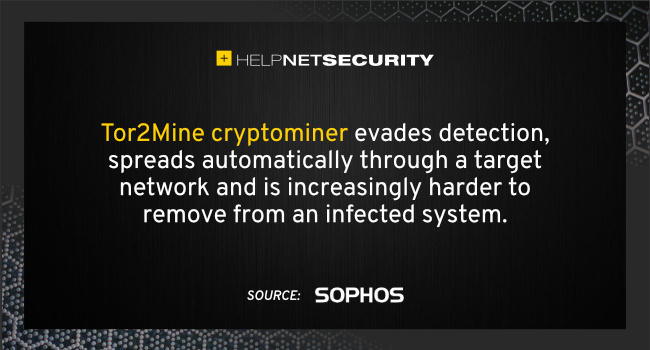Tor2Mine cryptominer has evolved: Just patching and cleaning the system won’t help
Sophos released new findings on the Tor2Mine cryptominer, that show how the miner evades detection, spreads automatically through a target network and is increasingly harder to remove from an infected system. Tor2Mine is a Monero-miner that has been active for at least two years.

In the research, Sophos describes new variants of the miner that include a PowerShell script that attempts to disable malware protection, execute the miner payload and steal Windows administrator credentials. What happens next depends on whether the attackers successfully gain administrative privileges with the stolen credentials. This process is the same for all the variants analyzed.
For example, if the attackers manage to get hold of administrative credentials, they can secure the privileged access they need to install the mining files. They can also search the network for other machines that they can install the mining files on. This enables Tor2Mine to spread further and embed itself on computers across the network.
Tor2Mine cryptominer can execute the miner remotely and filelessly
If the attackers cannot gain administrative privileges, Tor2Mine can still execute the miner remotely and filelessly by using commands that are run as scheduled tasks. In this instance, the mining software is stored remotely rather than on a compromised machine.
The variants all attempt to shut down anti-malware protection and install the same miner code. Similarly, in all cases, the miner will continue to re-infect systems on the network unless it encounters malware protection or is completely eradicated from the network.
“The presence of miners, like Tor2Mine, in a network is almost always a harbinger of other, potentially more dangerous intrusions. However, Tor2Mine is much more aggressive than other miners,” said Sean Gallagher, senior threat researcher at Sophos.
“Once it has established a foothold on a network, it is difficult to root out without the assistance of endpoint protection software and other anti-malware measures. Because it spreads laterally away from the initial point of compromise, it can’t be eliminated just by patching and cleaning one system. The miner will continually attempt…

